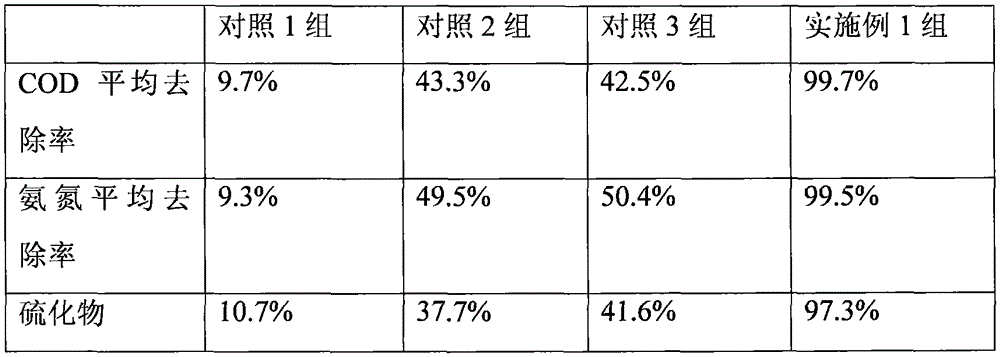Microbial preparation for processing industrial fermentation wastewater
A technology for fermenting wastewater and preparations, which is applied in the direction of microorganism-based methods, microorganisms, and natural water treatment. It can solve the problems of large one-time investment in chromatographic separation, low threonine content in the extract, and large consumption of ion-free water. The effect of increasing the amount of treated water, unique treatment effects, and reducing operating costs
- Summary
- Abstract
- Description
- Claims
- Application Information
AI Technical Summary
Problems solved by technology
Method used
Image
Examples
Embodiment 1
[0032] (1) The industrial waste water produced by threonine produced by the concentrated isoelectric process enters the pre-anaerobic tank UASB, controls a certain hydraulic retention time, and the effluent enters the sedimentation tank;
[0033] (2) The sedimentation tank adds microbial preparation advanced treatment, and described microbial preparation, it comprises the raw material of following weight portion:
[0034] 7 parts of nitrosative bacteria, 7 parts of Trichoderma longibrachiae, 5 parts of aerobic denitrifying bacteria, 5 parts of Acinetobacter baumannii, 4 parts of Aspergillus niger, 3 parts of Alcaligenes faecalis, 3 parts of Streptomyces rubrum, white Candida 1 part, Paenibacillus polymyxa 1 part.
[0035] The nitrosogenic bacteria are specifically Nitrosomonaseuropaea ATCC19718;
[0036] The long branch Trichoderma is Trichoderma longibrachinatum (Trichodermallongibrachinatum) CGMCCNO.8331 (see CN103710267A)
[0037] The aerobic denitrifying bacteria is aero...
Embodiment 2
[0052] Example 2 of the effect of treating waste water
[0053] Get threonine fermentation wastewater, enter the sewage treatment system according to the method of embodiment 1, and take samples to measure COD, ammonia nitrogen, and sulfide data;
[0054] Compared with Example 1, the control group 1 did not add compound bacterial agents; compared with Example 1, the control group 2 had only straw as the adsorbent carrier, and compared with Example 1, the control group 3 had only humic acid as the adsorbent carrier. Sampling and determination of COD, ammonia nitrogen, and sulfide data, the test data are as follows in Table 1:
[0055] Table 1
[0056]
PUM
 Login to View More
Login to View More Abstract
Description
Claims
Application Information
 Login to View More
Login to View More - R&D
- Intellectual Property
- Life Sciences
- Materials
- Tech Scout
- Unparalleled Data Quality
- Higher Quality Content
- 60% Fewer Hallucinations
Browse by: Latest US Patents, China's latest patents, Technical Efficacy Thesaurus, Application Domain, Technology Topic, Popular Technical Reports.
© 2025 PatSnap. All rights reserved.Legal|Privacy policy|Modern Slavery Act Transparency Statement|Sitemap|About US| Contact US: help@patsnap.com

